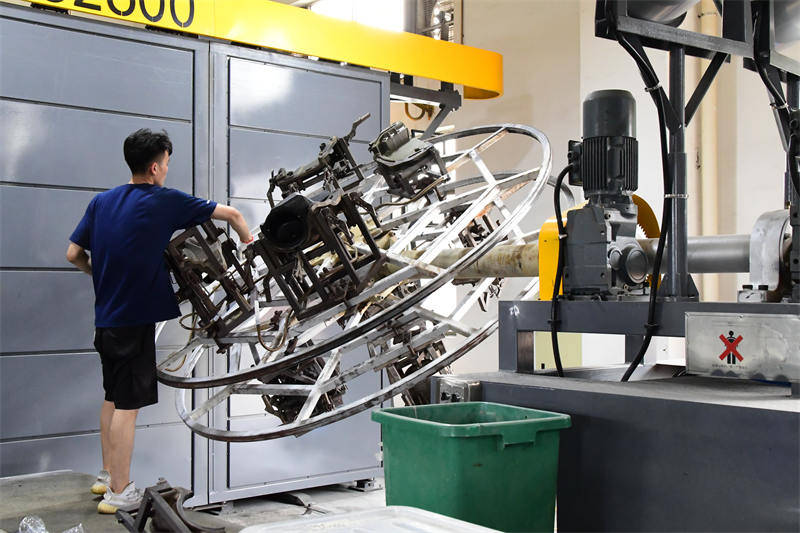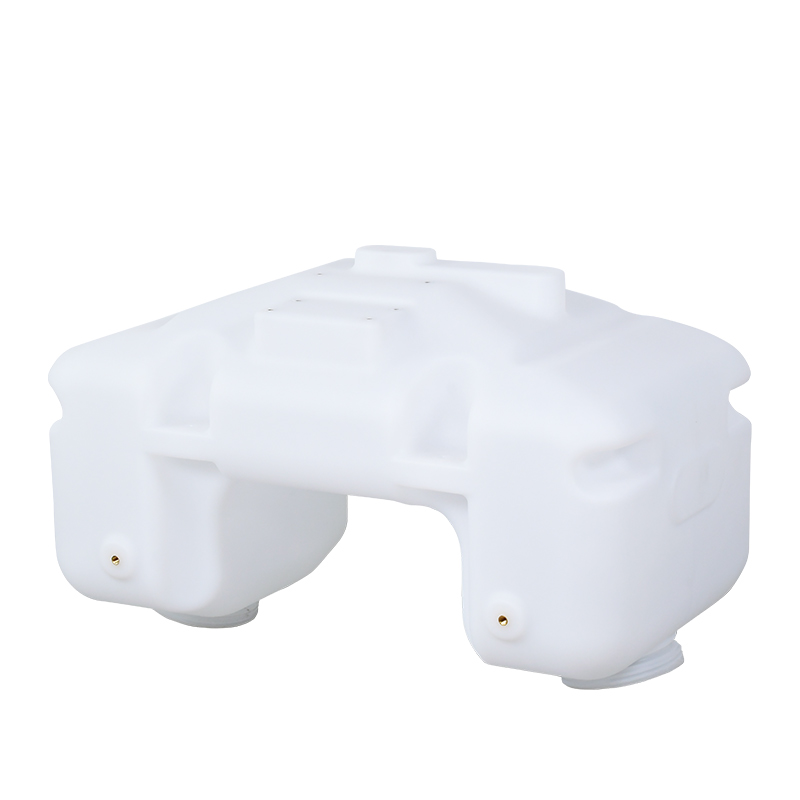How to Prevent Sticking and Jamming in Roto Molding Process
 May 19,2025
May 19,2025

How to Prevent Sticking and Jamming in Roto Molding Process?
Rotational molding, also known as rotomolding, is a versatile and cost-effective plastics manufacturing process widely used to produce hollow components such as water tanks, plastc toolbox, and plastic toys. However, during the roto molding process, issues like sticking and jamming can occur, affecting production efficiency and product quality. Below are some practical solutions to these problems.

Roto molding process stands out as a versatile and efficient method for producing a wide range of custom plastic products, such as tanks, plastic toolbox, and toys. However, during the roto molding process, issues like sticking and jamming can occur, affecting production efficiency and product quality. Below are some practical solutions to these problems.
Understanding the Root Causes of Sticking and Jamming
Before diving into solutions, it's crucial to understand what causes sticking and jamming in the roto molding process. Sticking typically occurs when the plastic material adheres to the mold surface or to other parts of the machine during the cooling and demolding stages. This can be due to several factors, such as improper mold release agent application, high mold surface temperature, or insufficient cooling. Jamming, on the other hand, often results from mechanical issues, like misaligned mold components, debris accumulation in the machine, or problems with the rotation mechanism. By identifying these root causes, roto molding factories can take targeted measures to prevent and address these issues.
Choosing the Right Mold Release Agent
A high - quality mold release agent is the first line of defense against sticking in the roto molding process. When selecting a release agent, consider factors such as the type of plastic material being used, the complexity of the mold design, and the production environment. For custom roto molded products with intricate designs, a specialized release agent that offers excellent release properties without leaving residue on the product surface is essential. Roto molding factories should also ensure proper application of the release agent, using the right amount and method to coat the mold evenly. Regularly testing different release agents and adjusting the application process based on the results can significantly reduce sticking problems.
Optimizing Mold Temperature and Cooling
Controlling the mold temperature and cooling process is vital for preventing sticking. During the roto molding process, if the mold surface temperature remains too high for too long, the plastic may continue to soften and stick to the mold. To avoid this, roto molding factories should establish an optimal temperature profile for each product. This involves carefully monitoring and adjusting the heating and cooling phases. Implementing a well - designed cooling system, such as using chilled water or forced air cooling, can help to rapidly and evenly cool the mold, reducing the risk of sticking. Additionally, using temperature sensors and controllers to precisely regulate the mold temperature throughout the process ensures consistent results and minimizes the chances of sticking.
Regular Maintenance and Cleaning
Preventive maintenance and regular cleaning are key to avoiding jamming in the roto molding process. Roto molding factories should develop a comprehensive maintenance schedule that includes checking and lubricating moving parts, inspecting the rotation mechanism for any signs of wear or misalignment, and ensuring that all mold components are in good condition. Regularly cleaning the machine to remove debris, dust, and any plastic particles that may accumulate during the production process is also crucial. By keeping the equipment clean and well - maintained, the risk of jamming due to mechanical issues or foreign objects getting stuck in the machinery is greatly reduced, leading to a more reliable and efficient roto molding operation for producing custom roto molded products.
Training and Staff Expertise
The skills and knowledge of the staff involved in the roto molding process play a significant role in preventing and resolving sticking and jamming issues. Roto molding factories should invest in comprehensive training programs for their employees, covering everything from proper mold preparation and release agent application to machine operation and maintenance. Well - trained staff are more likely to identify potential problems early on and take appropriate corrective actions. For example, they can quickly detect signs of improper mold alignment or overheating, which could lead to sticking or jamming, and address them before they escalate into major issues. This not only improves the efficiency of the production process but also enhances the quality of the custom roto molded products.
While sticking and jamming in the roto molding process can pose significant challenges for businesses looking for custom roto molded products and roto molding factories, there are practical solutions available. By understanding the root causes, choosing the right materials and processes, maintaining the equipment, and investing in staff training, roto molding operations can overcome these issues. This results in increased productivity, reduced costs, and higher - quality custom roto molded products.
 Tel: 0086-13632687993
Tel: 0086-13632687993  Email: roto@lightvenus.com
Email: roto@lightvenus.com

 Home
Home Key Considerations for Installing Rotomolding Molds on Rotomolding Machines
Key Considerations for Installing Rotomolding Molds on Rotomolding Machines  You May Also Like
You May Also Like



 Tel
Tel
 Email
Email
 Address
Address








